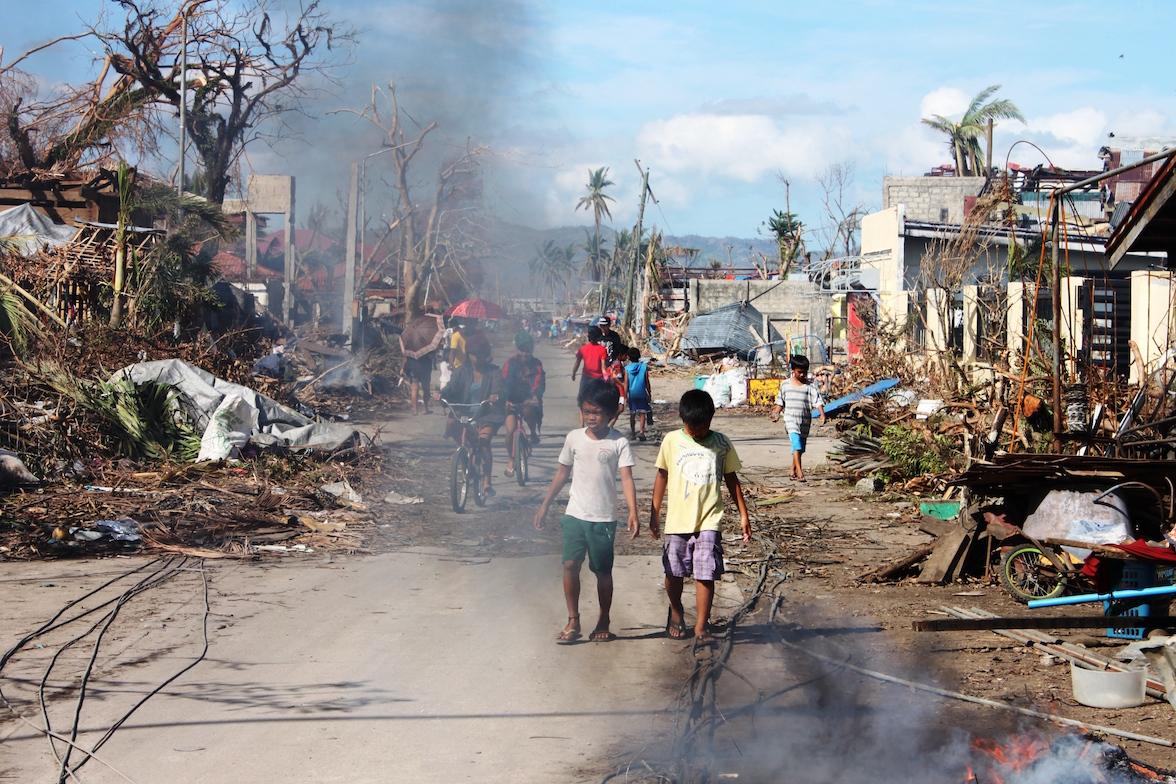A deep dive into humanitarian aid
2 October 2025
•By ChildFund Australia


When disasters strike, Australians have time and time again demonstrated a strong willingness to contribute to humanitarian aid efforts around the globe. Yet, the scale of the challenge is more immense than ever, with an estimated 305 million people [1] requiring urgent humanitarian assistance.
We spoke to ChildFund Australia’s Director of Programs, Sophie Jenkins, to explore key questions:
- What is humanitarian aid?
- How is it coordinated?
- Who provides humanitarian aid?
- What challenges lie ahead?
What is humanitarian aid?
The definition of humanitarian aid refers to the immediate assistance provided in the aftermath of disasters like cyclones or earthquakes, or armed conflict. The goal of humanitarian aid is to:
- Save lives,
- alleviate suffering, and
- maintain human dignity.
Humanitarian aid is vital for addressing the immediate needs of affected communities and laying the foundation for long-term recovery.
Types of Humanitarian Aid
The types of humanitarian aid vary depending on the nature of the crisis. Common categories include:
- Food assistance to address hunger and malnutrition.
- Shelter support, including temporary housing and materials.
- Health services, such as mobile clinics or emergency care.
- Water, sanitation, and hygiene (WASH), ensuring access to clean water and safe waste disposal.
- Non-food items (NFIs), such as blankets, cooking utensils, and hygiene kits.
- Psychosocial support, helping individuals deal with trauma and grief.
These are just a few humanitarian aid examples that play a critical role in disaster response.
Current humanitarian emergencies that ChildFund Australia supports
Across the world, humanitarian emergencies are becoming more protracted and harder to address. ChildFund Australia and ChildFund Alliance members work with partners in some of the most protracted crises across the world including Afghanistan, Myanmar and Cox’s Bazar in Bangladesh.
ChildFund’s Response in Myanmar
In late March 2025, two devastating earthquakes shattered entire communities, forcing children and their families into makeshift shelters and pushing essential services like running water, sanitation and healthcare to the brink of collapse.
This was Myanmar’s deadliest quake in decades, claiming over 3000 lives and injuring 5,000. More than 28 million people were affected across six regions. Our ChildFund Myanmar team and local partners quickly mobilised to support affected families.
Their first priority was to equip local emergency response teams with the tools they needed to save lives. We delivered essential items, including helmets with headlamps, clean water, surgical masks and gloves to 12 local rescue groups. One team leader expressed what difference this support made in their efforts to dig people out of the rubble in time, “ We have utilized the items provided not only for our team but also for another local rescue team that was in urgent need. We sincerely appreciate the generous support from donors for our affected communities.”
Who provides humanitarian aid?
Humanitarian aid is not a single-handed effort, but a coordinated response involving a range of partners. This includes:
- National governments, which are central to leading and coordinating responses.
- United Nations agencies, such as UN OCHA, UNICEF and the World Food Programme.
- International humanitarian aid organisation s like ChildFund Australia.
- Local non-government organisations (NGOs) working in affected communities.
- Private sector partners, including logistics and communications companies.
The most effective humanitarian responses are led by local communities and organisations, guided by their local knowledge and needs. Why? Because it is the humanitarians living and working in affected communities who are the first to respond during a crisis. They possess deep local knowledge and established networks that are crucial for effective, sustainable humanitarian action. This on the ground expertise ensures that aid is guided by what people need, rather than by an external plan.
Does Australia ever receive emergency assistance?
Yes. While Australia is a donor to many global emergencies, we also receive support during domestic disasters when needed. For example, during the 2019–20 Black Summer bushfires, the Australian government received international emergency assistance from the United States, Canada and the United Kingdom to help fight fires and support recovery efforts.
This underscores that even wealthy nations benefit from emergency assistance in times of extreme crisis.
Measuring the impact of humanitarian aid
The humanitarian aid sector uses well-established indicators to measure success. For instance, a universal benchmark in water, sanitation, and hygiene programs is ensuring every person in an affected population has access to at least 15 litres of water per day for drinking and hygiene. Such metrics are critical in assessing the effectiveness and accountability of humanitarian aid programs.
Key humanitarian aid issues of the 21st century
Today’s humanitarian landscape is shaped by increasingly frequent and complex crises. Major emergencies include:
- Earthquake recovery in Myanmar
- Refugee crisis in Cox’s Bazar, Bangladesh
- Widespread food insecurity and earthquake recovery in Afghanistan
A lack of funding, access constraints or direct attacks on aid workers regularly impact the ability of humanitarians to respond, and the consequences of which can be devastating for communities at risk.
Support ChildFund Australia’s humanitarian aid efforts
In times of crisis, children are among the most vulnerable. Whether facing conflict, disasters or food insecurity, they need immediate and sustained support to survive and recover.
ChildFund Australia’s response provides life-saving humanitarian aid including:
- clean water,
- food,
- shelter, and
- psychosocial care.
You can make a difference where it’s needed most. By becoming a monthly donor, you’ll help us respond swiftly when emergencies strike — providing children and families with the care and support they need. Become a monthly donor today.
(1) Global Humanitarian Overview 2025, OCHA
